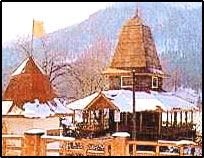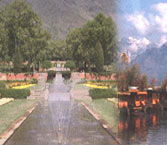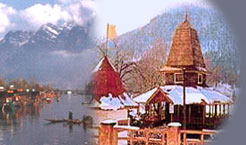
 |
On your tour to India, you might just be inclined to know about Srinagar, a city of excellent landscapes and abundant natural beauty. The city throws up several expanses of breathtaking natural beauty welcoming scores of tourists from all over the world. 
Fast Facts
| Languages |
Hindi, Urdu, Kashmiri, and English |
| Best time to Visit |
April-June |
| STD Code |
0194 |
Location of Srinagar:
Situated on the banks of the Jhelum River, a tributary of the famous Indus River, the city of Srinagar is a heavenly abode on earth with numerous lakes and large expanses of green valleys spread throughout. The Jhelum River runs through the city and the valley, emptying in the Wular Lake. The city at 876 km north of Delhi is famous for its nine ancient bridges, linking the two parts of the city.
History of Srinagar:
Founded by the King Pravarasena II over 2,000 years ago, Srinagar owes its name to two Sanskrit words, Sri (meaning profusion and wealth) and Nagar, (meaning a city). Dating back to the 3rd century BC, the city was formerly a part of the Mauryan Empire, which once happened to be one of the most important empires of India. This region prospered quite well under the rule of the Kushans in the 1st century AD. During this period, it used to be an important Buddhist pilgrimage site. In the 6th century, however, it became a part of the kingdom of Vikramaditya, the ruler of Ujjain. Local Hindu rulers ruled it until the 14th century, when Muslims rulers invaded and captured it. With the downfall of the Mughal Empire the fortunes of the area swung dramatically. In 1814, it went to the Sikhs, when Ranjit Singh got the better of the Pathans. However, ultimately the British defeated Ranjit Singh and in accordance with the treaty of Lahore in 1846, they appointed Gulab Singh as the autonomous ruler of Kashmir. Later, Hari Singh, the great grandson of Gulab Singh, united this huge state into India in 1948, when the Pathan intruders from Pakistan tried to capture this state.
Best Seasons, Climate, and Clothing:
The climatic conditions in Srinagar are mostly alpine. Summers (April-June) are gentle and soothing while the winters (November-February) are icy cold. During December-February it is blessed with heavy snowfall. Srinagar is best visited during summers between the months of April and June. You will need to carry heavy woolens while traveling to Srinagar.
Log on to www.touristplacesinindia.com which gives online information About Srinagar, the tourist attractions in Srinagar, booking for India travel tours, tour packages etc.
 |
|

